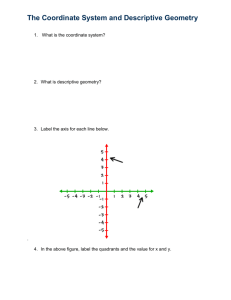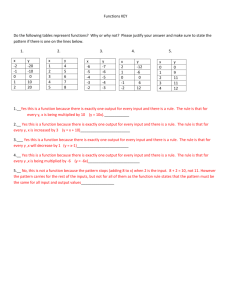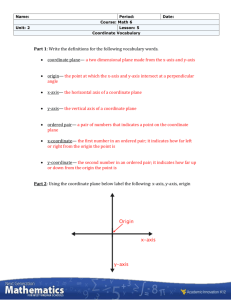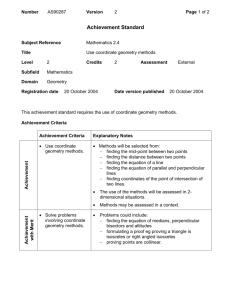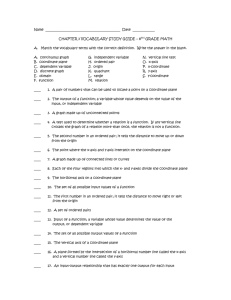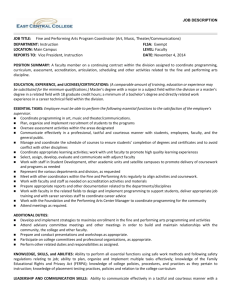Activity 1.5.1 The Coordinate System and Descriptive Geometry
advertisement
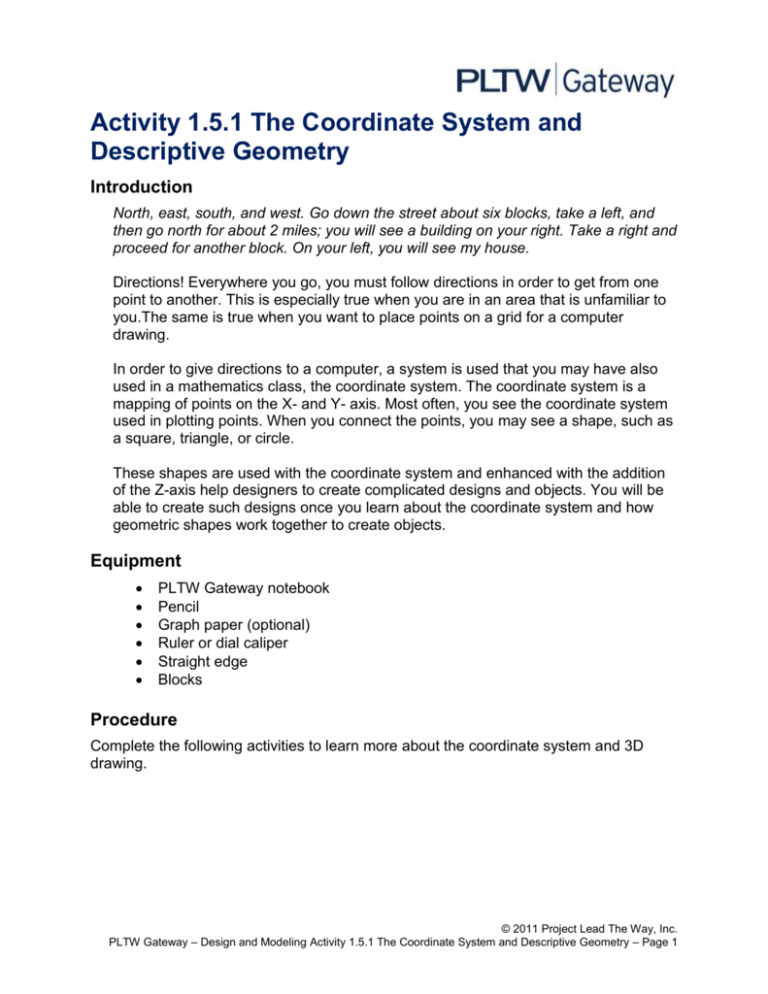
Activity 1.5.1 The Coordinate System and Descriptive Geometry Introduction North, east, south, and west. Go down the street about six blocks, take a left, and then go north for about 2 miles; you will see a building on your right. Take a right and proceed for another block. On your left, you will see my house. Directions! Everywhere you go, you must follow directions in order to get from one point to another. This is especially true when you are in an area that is unfamiliar to you.The same is true when you want to place points on a grid for a computer drawing. In order to give directions to a computer, a system is used that you may have also used in a mathematics class, the coordinate system. The coordinate system is a mapping of points on the X- and Y- axis. Most often, you see the coordinate system used in plotting points. When you connect the points, you may see a shape, such as a square, triangle, or circle. These shapes are used with the coordinate system and enhanced with the addition of the Z-axis help designers to create complicated designs and objects. You will be able to create such designs once you learn about the coordinate system and how geometric shapes work together to create objects. Equipment PLTW Gateway notebook Pencil Graph paper (optional) Ruler or dial caliper Straight edge Blocks Procedure Complete the following activities to learn more about the coordinate system and 3D drawing. © 2011 Project Lead The Way, Inc. PLTW Gateway – Design and Modeling Activity 1.5.1 The Coordinate System and Descriptive Geometry – Page 1 The Coordinate System 1. Label the X- and Y-axis and identify the positive and negative sections. 2. Label the Origin, where the X-axis intersects the Y-axis as Point (0, 0). 3. Starting with 1, number the intersection of the positive X-axis with the vertical lines. 4. Starting with -1, number the intersection of the negative X-axis with the vertical lines. 5. Starting with 1, number the intersection of the positive Y-axis with the horizontal lines. 6. Starting with -1, number the intersection of the negative Y-axis with the horizontal lines. 7. Plot and label the following points: A (3, 2); B (-2, 4); C (-2, -3); D (1, -2); E (2, 0); F (0, -3). © 2011 Project Lead The Way, Inc. PLTW Gateway – Design and Modeling Activity 1.5.1 The Coordinate System and Descriptive Geometry – Page 2 Coordinate Geometry 1. Label and number the X- and Y-axis. 2. Label the points at the corners of the square, triangle, and five-sided figure. 3. Label the center of the circle and one point at the outside edge of the circle. © 2011 Project Lead The Way, Inc. PLTW Gateway – Design and Modeling Activity 1.5.1 The Coordinate System and Descriptive Geometry – Page 3 Coordinate Geometry Continued 1. Mark, label, and number the X- and Y- axis. 2. Draw one of your initials in block letters on the grid. 3. Where each line intersects another line, label the points and fill in the chart for the initial. Start at one location and continue clockwise around the letter to represent connected lines. Initial Points: © 2011 Project Lead The Way, Inc. PLTW Gateway – Design and Modeling Activity 1.5.1 The Coordinate System and Descriptive Geometry – Page 4 Sketching and the X and Y axis Directions 1. Using the graph below, label the x- and y-axis. The large square represents 1 inch. 2. What does each small square represent? _____________________ 3. Provide the decimal equivalent for each fraction below: Fraction 1/8 1/4 3/8 1/2 5/8 3/4 7/8 8/8 Decimal Equivalent 4. Starting at the Origin (0, 0), sketch the profile (front) of the block provided to you by your teacher. Be sure to sketch lightly and with a pencil in order for you to adjust your sketch. Use the scale that each small square equals 1/8 in., each large square equals 1 in. © 2011 Project Lead The Way, Inc. PLTW Gateway – Design and Modeling Activity 1.5.1 The Coordinate System and Descriptive Geometry – Page 5 5. Label the coordinate points (X, Y) for each corner. 6. Show your finished sketch to your teacher. Conclusion 1. What is the purpose of the coordinate system? 2. How does the Z- axis relate to the X- and Y-axis? © 2011 Project Lead The Way, Inc. PLTW Gateway – Design and Modeling Activity 1.5.1 The Coordinate System and Descriptive Geometry – Page 6

